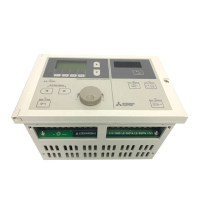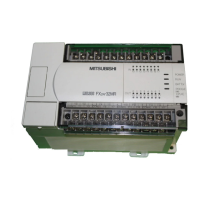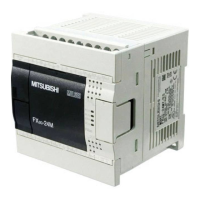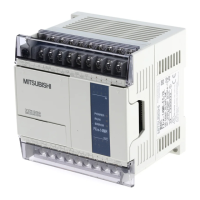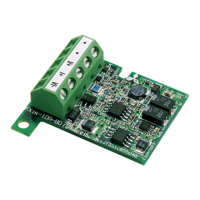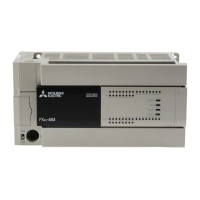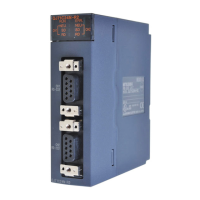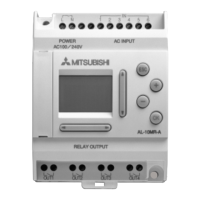279
CHAPTER 7 CONVENIENT USAGE OF DEVICES
7
7.2 Local Device
(1) Local device setting
To use a local device, perform the following procedure.
Note that the local device range is common to all programs, and cannot be changed for each program.
If a local device range is specified as MO to M100, this range setting applies to all programs that use the
local device.
● The 32-bit index modification range must not overlap with the local device setting range of the index register. If
overlapped, 32-bit index modification values will be written over the local device values.
● If the size of the local device in the standard RAM is set to be changed while a sampling trace file is stored in the standard
RAM, the sampling trace file will be cleared. To save the trace results, store them in a personal computer.
● All of the devices that have not been set as local devices are global devices.
1. Set a local device range.
Project window [Parameter]
[PLC Parameter] [Device]
↓
2. Set a memory for storing the local device file and a
file name.
Project window [Parameter]
[PLC Parameter] [PLC File]
↓
3. Write the parameters to the CPU module.
Ex.
Ex.
Program A Program B Program C
M0
M100
Local device range is
common to all programs.
Local
device
Local
device
Local
device
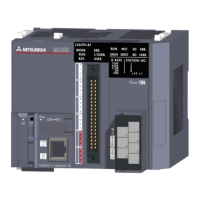
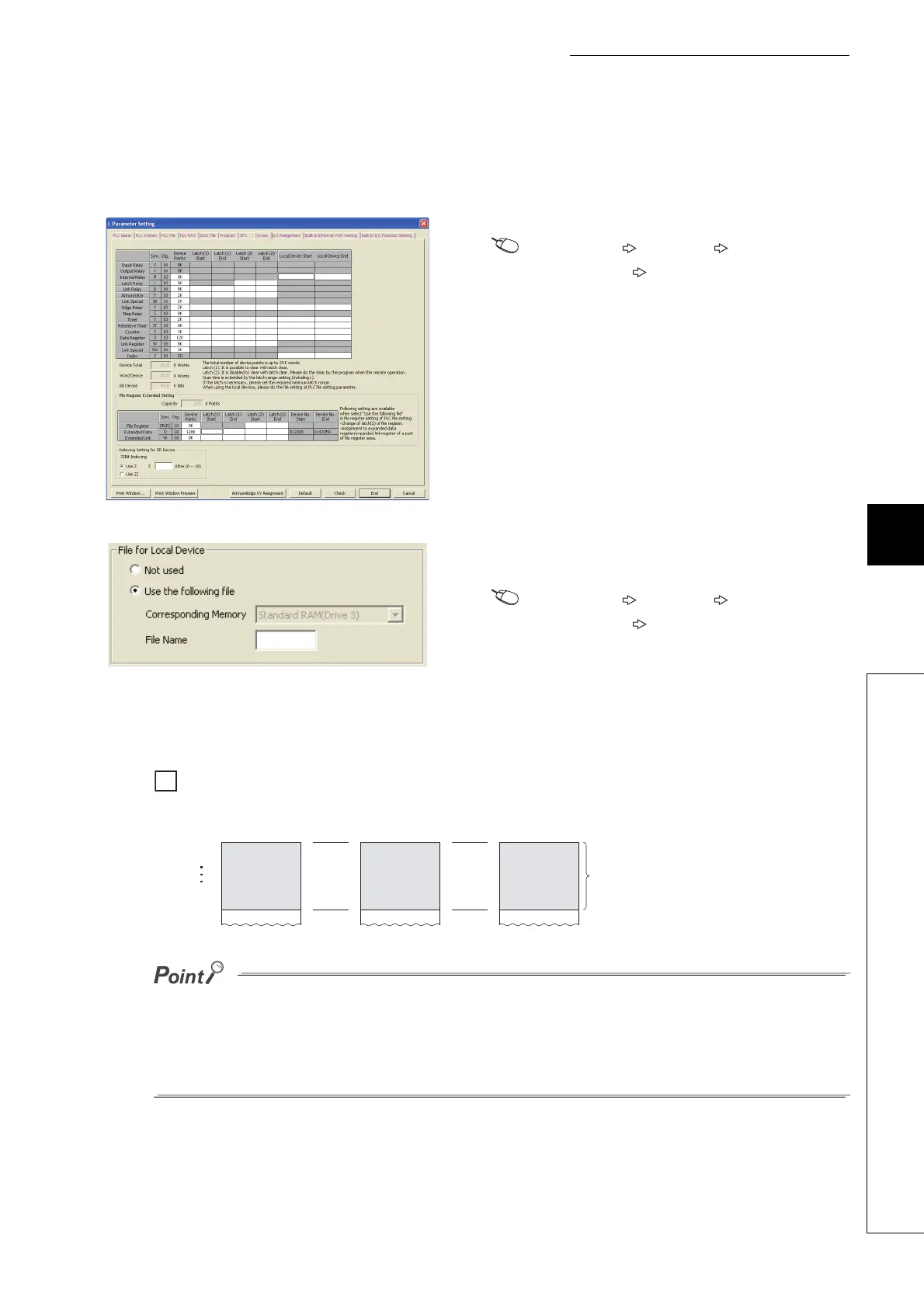